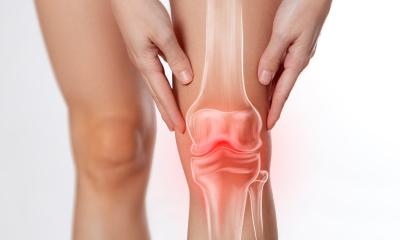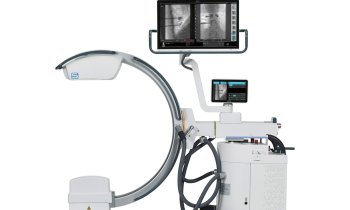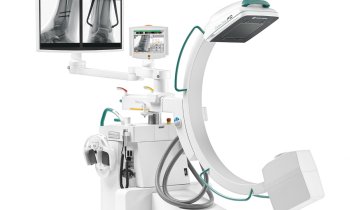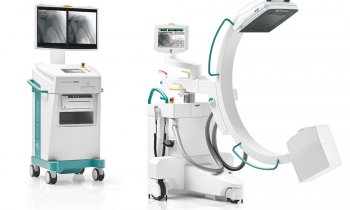Surgery
World’s first bilateral hand transplant on a child performed
Surgeons at The Children’s Hospital of Philadelphia (CHOP) joined with colleagues from Penn Medicine recently to complete the world’s first bilateral hand transplant on a child. Earlier this month, the surgical team successfully transplanted donor hands and forearms onto eight-year-old Zion Harvey who, several years earlier, had undergone amputation of his hands and feet and a kidney transplant following a serious infection.

Led by L. Scott Levin, M.D., FACS*, Chairman of the Department of Orthopaedic Surgery at Penn Medicine, Director of the Hand Transplantation Program at The Children’s Hospital of Philadelphia, and Professor of Surgery (Division of Plastic Surgery) at the Perelman School of Medicine at The University of Pennsylvania, a 40-member multidisciplinary team of physicians, nurses and other staff from plastic and reconstructive surgery, orthopaedic surgery, anesthesiology, and radiology, participated in the operation. Attending surgeons from CHOP and from Penn Medicine, along with Scott H. Kozin, M.D.***, chief of staff for Shriners Hospitals for Children—Philadelphia, collaborated during the 10-hour surgical transplantation.
“This surgery was the result of years of training, followed by months of planning and preparation by a remarkable team,” said Levin. “The success of Penn’s first bilateral hand transplant on an adult, performed in 2011, gave us a foundation to adapt the intricate techniques and coordinated plans required to perform this type of complex procedure on a child. CHOP is one of the few places in the world that offer the capabilities necessary to push the limits of medicine to give a child a drastically improved quality of life.”
“This extraordinary accomplishment highlights the world-class abilities of the physicians, nurses, therapists and other staff who are privileged to serve our patients and their families with skill and dedication,” said Madeline Bell, president and chief executive officer of The Children’s Hospital of Philadelphia. “I’m especially grateful to Zion’s family who entrusted him to our care.”
“The ability to plan and carry out this type of surgery is testament to the skill, expertise, surgical innovation, and passion for excellence available here at The Children’s Hospital of Philadelphia,” said N. Scott Adzick, M.D., CHOP’s surgeon-in-chief. “I am extremely proud of Dr. Levin and his team for their courage, dedication and expertise, and appreciative to Zion and his family, whose bravery and trust in this clinical team is truly inspiring.”
Zion was initially referred to Shriners Hospitals for Children for their expertise in pediatric orthopaedic care, including surgery and rehabilitation. Through a coordinated effort between Shriners Hospitals for Children and CHOP, Zion was evaluated as a possible recipient of the first pediatric hand transplant. “The collaborative effort between these institutions was necessary to assemble the team and organize the players to orchestrate such a complex and demanding procedure that had never been performed on a child”, stated Scott H. Kozin, M.D., chief of staff for Shriners Hospitals for Children—Philadelphia.
Before the surgery could be conducted, it was first necessary to locate a suitable donor, a function coordinated by Gift of Life Donor Program, the nonprofit organ and tissue donor program which serves the eastern half of Pennsylvania, southern New Jersey and Delaware. “For 41 years, Gift of Life Donor Program has partnered with transplant centers throughout this region to bring innovative transplant procedures to patients in need,” stated Richard Hasz, vice president of Clinical Services for Gift of Life. “As with all types of transplant, surgeries such as this one could not take place without the generosity of a donor and a donor family. We thank them for their selflessness and for their gift that made this surgery possible.”
“The skills necessary to perform such complex surgery at CHOP have been acquired from lessons learned over the past 20-plus years of performing pediatric solid organ transplantation,” said Abraham Shaked, M.D., Ph.D., the Eldridge L. Eliason Professor of Surgery and Director, Penn Transplant Institute. “We have learned the importance of closely monitoring and managing the activity of the immune system through years of experience, and are hopeful that Zion will enjoy excellent long-term allograft function and a normal life.”
Zion Harvey is a bright and precocious eight-year-old who has told his doctors that he cannot wait to someday throw a football. A happy and outgoing child, he has adapted well to life without hands, learning to eat, write and even play video games. He figured out ways to perform most of the activities other kids his age can do. Zion received prosthetics for his feet and is able to walk, run and jump with complete independence. Following his latest surgery and after his upcoming rehabilitation, it is expected that Zion will finally get his wish to throw a football along with a myriad of other accomplishments to come.
Double hand transplantation is a complex procedure involving many surgical and non-surgical components. First, the potential recipient must undergo extensive medical screenings and evaluations before surgery. In this case, the patient’s previous medical condition, following sepsis at an early age, factored into the decision to perform the transplant. “Zion’s kidney transplant following his infection made him a candidate for transplant because he was already taking anti-rejection medication,” said Benjamin Chang, M.D.**, co-director of CHOP’s Hand Transplant Program as well as associate chief of the Division of Plastic Surgery at Penn Medicine.
During the surgery, the hands and forearms from the donor were attached by connecting bone, blood vessels, nerves, muscles, tendons and skin. The surgical team was divided into four simultaneous operating teams, two focused on the donor limbs, and two focused on the recipient. First, the forearm bones, the radius and ulna, were connected with steel plates and screws. Next, microvascular surgical techniques were used to connect the arteries and veins. Once blood flow was established through the reconnected blood vessels, surgeons individually repaired and rejoined each muscle and tendon. Surgeons then reattached nerves and then closed the surgical sites.
Zion continues to receive daily immunosuppressant medications to prevent his body from rejecting the new limbs, as well as his transplanted kidney. Zion is being cared for by CHOP’s nephrology and kidney transplant team, as well as his hand transplant surgical team. Post surgery, he spent a week in CHOP’s Pediatric Intensive Care Unit, then was moved to a medical unit and eventually moved to an inpatient rehabilitation unit where he undergoes rigorous hand therapy several times per day, an essential step to gaining improvement in function.
The clinical team expects Zion to spend several more weeks in CHOP’s rehabilitation unit, and then to be discharged to his home in Baltimore, Md. Dr. Levin and his team will continue to follow Zion monthly in the short-term and then annually throughout his lifetime.
Source: The Children’s Hospital of Philadelphia
10.11.2015










